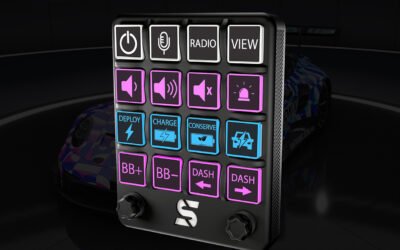
Introduction to Electronics Design Evolution
The Shift in Electronics Design Landscape
Have you ever paused to consider how rapidly the field of electronics design is evolving? It’s not just about smaller, faster, and smarter devices anymore; it’s a revolution. In 2024, we’re witnessing a paradigm shift, marking a new era in electronics design. This evolution is driven by the relentless pursuit of innovation, pushing the boundaries of what’s possible. From the integration of advanced technologies to the adoption of sustainable practices, the landscape is transforming at an unprecedented pace. For engineers and designers, staying abreast of these changes isn’t just beneficial; it’s essential.
Why 2024 is a Pivotal Year
So, why is 2024 such a big deal in the world of electronics design? Imagine a jigsaw puzzle where every piece is crucial – that’s 2024 for you. This year symbolizes a convergence point where various technological, environmental, and social factors align, setting the stage for groundbreaking advancements. We’re talking about a year that’s expected to set trends, redefine norms, and establish benchmarks in the industry. For those immersed in electronics design, it’s like being at the epicenter of a thrilling transformation. Every decision, every design, and every innovation in 2024 carries the potential to shape the future of technology.
In a nutshell, 2024 isn’t just another year on the calendar; it’s a beacon for change, signaling new horizons in electronics design. Whether you’re a seasoned engineer or a budding designer, the excitement is palpable. Are you ready to be part of this exhilarating journey? Let’s dive deeper into the trends that are making 2024 a landmark year in electronics design, and uncover how they’re redefining the way we think, create, and innovate.
Emerging Technologies Reshaping Electronics Design
AI and Machine Learning Integration
Let’s talk about AI and Machine Learning (ML) – they’re not just buzzwords anymore; they’re revolutionizing electronics design in 2024. Imagine having a super-smart assistant that not only helps you design but also predicts future trends and user preferences. That’s exactly what AI and ML are doing. They’re transforming the way we approach electronics design, making it more efficient, predictive, and innovative. From automated design processes to intelligent simulations, these technologies are enabling designers and engineers to push the boundaries of creativity and functionality. The integration of AI and ML is not just a trend; it’s a game-changer, offering a glimpse into a future where technology designs technology.
Advances in Nanotechnology
Now, let’s shift our focus to something incredibly small yet immensely powerful – nanotechnology. This is where the saying “good things come in small packages” really comes to life. Nanotechnology in electronics design is like having a magic wand that lets you manipulate materials and components at a molecular level. The advancements in this field are nothing short of spectacular. We’re seeing stronger, lighter, and more energy-efficient materials, all thanks to nanotech. Think of it as the building blocks of the future – tiny, yet mighty. For engineers and designers, nanotechnology is opening doors to possibilities that were once considered science fiction. It’s enabling us to dream bigger and achieve more with less, marking 2024 as a landmark year in electronics design.
In 2024, AI and ML integration, along with advancements in nanotechnology, are not just shaping the future of electronics design; they’re redefining it. As engineers and designers, embracing these technologies is not just an option; it’s a necessity to stay ahead in this dynamic field. So, are you ready to ride the wave of these emerging technologies and make your mark in the world of electronics design?
Sustainability: A Core Focus in Future Designs
Eco-Friendly Materials and Practices
Sustainability in electronics design is no longer a nice-to-have; it’s a must-have. As designers and engineers in 2024, we’re not just creating; we’re caretakers of the planet. The shift towards eco-friendly materials and practices in electronics design is not just a trend; it’s a responsibility. We’re talking about using biodegradable materials, minimizing waste, and maximizing resource efficiency. It’s about designing products that are not only innovative but also kind to the environment. Think of it as a green revolution in the tech world. By incorporating sustainable materials and practices, we’re not just making better electronics; we’re making a better future. After all, what’s the point of advanced technology if we don’t have a planet to use it on?
Energy Efficiency in Electronics
Now, let’s turn the spotlight to energy efficiency. It’s no secret that electronics consume a significant amount of energy. So, as we move forward in 2024, how do we tackle this? The answer lies in designing electronics that are not just powerful but also energy-efficient. This involves clever engineering to ensure that devices use the least amount of energy possible without compromising on performance. Imagine your future devices being lean, mean, energy-saving machines. That’s the goal. By focusing on energy efficiency, we’re not just saving costs; we’re saving the planet. It’s a win-win.
In 2024, sustainability is not just a buzzword in the realm of electronics design; it’s the heartbeat. As engineers and designers, we have the power and the responsibility to lead this change. It’s time to think green, design smart, and pave the way for a sustainable future in electronics. Ready to join the green revolution in tech?
The Rise of Customizable and Modular Electronics
User-Centric Design Approaches
In 2024, the electronics design industry is taking a significant turn towards user-centric approaches. It’s all about creating devices that not only meet the needs of users but also resonate with their personal styles and preferences. This shift is like tailoring a suit – it has to fit perfectly. Customizable and modular designs are the answer to this growing demand. Imagine being able to modify your gadgets just like you do with mobile apps. Swap out a camera lens, upgrade a processor, or even change the color of your device – all with ease. This level of personalization is not just cool; it’s changing the relationship between users and their devices. It’s a move from one-size-fits-all to one-size-fits-one, marking a new era in electronics design that’s all about the user.
The Impact on Manufacturing Processes
Now, let’s talk about how this shift is impacting manufacturing processes. The rise of customizable and modular electronics is like a puzzle for manufacturers – complex but exciting. Traditional manufacturing methods are evolving to accommodate the need for flexibility and adaptability. This means shorter production runs, rapid prototyping, and a more agile approach to manufacturing. It’s a big leap from the conventional way of doing things, but it’s a leap that’s necessary. As engineers and designers, we’re not just creating products; we’re creating experiences. And to do that, we need to embrace these changes in manufacturing processes. It’s about being nimble, innovative, and ready to meet the ever-changing demands of users.
In 2024, the trend towards customizable and modular electronics is more than just a fleeting fad; it’s a fundamental shift in the way we think about and create technology. It’s exciting, it’s challenging, and it’s incredibly rewarding. As engineers and designers, we have the opportunity to be at the forefront of this transformation, crafting devices that are not just functional but also deeply personal. Are you ready to design the future, one customizable piece at a time?
Connectivity and IoT: Enabling Smarter Electronics
The Expansion of IoT in Everyday Devices
Have you noticed how our everyday devices are getting smarter and more connected? Welcome to 2024, where the Internet of Things (IoT) is not just a concept, but a living, breathing part of our daily lives. IoT is like the nervous system of electronics design, connecting devices in ways that make them more intuitive, responsive, and, frankly, more helpful. Imagine your coffee maker knowing your schedule better than you do or your car syncing seamlessly with your home to optimize energy usage. This isn’t the future; it’s what’s happening now. IoT is transforming ordinary devices into extraordinary companions that understand and adapt to our needs. It’s a fascinating world where your gadgets are not just tools but partners in your daily journey.
Enhancing User Experience through Connectivity
But IoT isn’t just about connecting devices; it’s about enhancing the user experience. Every connection, every interaction is an opportunity to make life easier, more efficient, and more enjoyable. In 2024, electronics design is taking this to heart. It’s no longer about flashy features; it’s about meaningful connections that make a real difference. This enhanced connectivity is enabling devices to provide personalized experiences, anticipate needs, and even solve problems before we’re aware of them. It’s like having a personal assistant embedded in your electronics, one that’s always learning, always adapting, and always working to make your life better.
In 2024, the integration of connectivity and IoT in electronics design is not just a trend; it’s a revolution in how we interact with technology. As engineers and designers, we’re at the forefront of this change, crafting experiences that go beyond mere functionality. We’re creating a connected world where technology is not just a part of life; it becomes a partner in living it. Are you ready to be part of this exciting journey into a smarter, more connected future?
The Future Workforce in Electronics Design
Skills and Education for Tomorrow’s Engineers
As we step into 2024, the landscape of electronics design isn’t just evolving in terms of technology; it’s also reshaping the skills and education required for tomorrow’s engineers. Think of it as preparing for a marathon; you need the right training to succeed. The future of electronics design demands a blend of technical expertise, creativity, and an understanding of emerging trends. It’s no longer enough to be just good with circuits; engineers now need to be adept in areas like AI, IoT, and sustainable design. It’s like adding more tools to your toolbox – the more versatile you are, the more valuable you become in this field. This shift in skills and education is not just preparing engineers for the future; it’s setting the stage for the next wave of groundbreaking innovations.
The Role of Collaborative and Remote Work Environments
Let’s not forget the impact of how we work. The year 2024 is seeing a significant shift towards collaborative and remote work environments in electronics design. Gone are the days when designing was a solitary task. Now, it’s all about teamwork, even if your team is spread across the globe. Technology has bridged the gap, making collaboration easier and more effective than ever. This change in the work environment is like opening up a world of possibilities – diverse ideas, cross-cultural innovations, and a melting pot of creativity. It’s an exciting time where the best of the best can come together, regardless of their physical location, to push the boundaries of what’s possible in electronics design.
The future workforce in electronics design is stepping into an era marked by advanced skills, innovative education approaches, and a dynamic work environment. It’s an exhilarating time to be an engineer or designer. Are you ready to be part of this transformative journey, equipped with the right skills and embracing new ways of collaboration? The future is here, and it’s waiting for you to make your mark.
Conclusion: Preparing for the Future in Electronics Design
Staying Ahead of the Curve
As we wrap up our exploration of the future of electronics design in 2024, let’s pause and ask ourselves: how do we stay ahead of this ever-evolving curve? It’s like surfing; you need to catch the wave at the right moment. For engineers and designers, this means being perpetually curious, continuously learning, and always willing to adapt. The world of electronics design is not static; it’s a dynamic field where today’s innovations become tomorrow’s standards. Staying ahead requires an appetite for innovation and a keen eye for emerging trends. It’s about being a lifelong learner, constantly upgrading your skills and knowledge to keep pace with the rapidly changing technological landscape. Are you ready to ride the wave of change and lead the charge in electronics design?
The Importance of Continuous Learning and Adaptation
In conclusion, the key to thriving in the future of electronics design lies in continuous learning and adaptation. It’s like a journey where the path keeps changing, and the only way to stay on course is to keep moving forward. This journey is not just about acquiring new technical skills; it’s also about developing a mindset that embraces change and innovation. As the world of electronics design evolves, so must we. Whether it’s adopting new technologies, exploring sustainable practices, or embracing collaborative work environments, the future is all about flexibility and adaptability. So, let’s embrace this exciting future with open arms, ready to learn, adapt, and innovate. The future of electronics design is bright, and it’s calling out for visionaries like you. Are you up for the challenge?





0 Comments